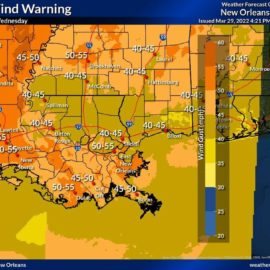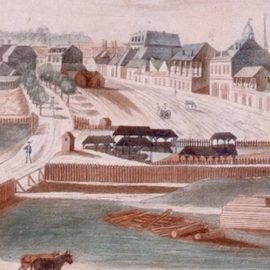
After Ida the city and others came up with idea of using churches and community centers as power hubs.
After Hurricane Ida knocked out New Orleans’ power, leaving thousands to suffer in the sweltering heat, various community groups hatched plans to use solar to turn restaurants and churches into feeding and cooling centers if another monster storm hits. Now the city is getting in on the action, with the help of a FEMA grant that will pay for the design of a solar-powered backup system at the Sanchez Multi-Service Center in the Lower Ninth Ward. The $221,375 grant is the city’s first under a new federal program created to mitigate natural hazards before they happen, unlike traditional disaster aid programs that offer reimbursements and repairs on the back end. With the money in hand, the city is partnering with the National Renewable Energy Lab to plan and design a solar-powered backup power generation system. The city estimates the process will take 18-24 months. The cost of building the project will be determined by the necessary size of the solar panel array, the battery capacity and any grid interconnections, according to Anna Nguyen, the public engagement director for the city’s Office of Homeland Security and Emergency Preparedness. The city, however, has not determined how it will pay for the actual construction. Potential funding sources include Finance New Orleans or federal grant programs, officials said.
nola.com
The Sanchez Center is a perfect fit for a hub.
The Sanchez Center is one of 15 city-designated emergency resource centers that already have backup power capacity thanks to natural gas connections and transfer switches installed by Entergy New Orleans. But Nguyen said there could be advantages to solar power there. “Unlike the portable generators the building is currently set up for, the battery system will be able to turn on automatically when the grid goes out, providing continuous power through shorter outages and for several days after a major disaster,” she said.
The City is trying to go green.
As a city, New Orleans has scored poorly on national clean energy rankings, and it has struggled to wean itself off fossil fuel-powered vehicles. But the whirl of community-driven solar power activism in New Orleans since Ida potentially gives the city as an edge as it tries to go green. One church slated to get solar panels through the Community Lighthouse Project is the Central Missionary Baptist Church, a few blocks away from the Sanchez Center. The city’s study will look at the feasibility of connecting both solar generators as part of a microgrid that could power the neighborhood even when it loses connections to the larger grid. Brod Bagert, an organizer at Together New Orleans who’s involved in the community solar project, hailed the city’s decision to install solar on its facilities nearby. “We’re emerging as having a real advantage because of the bottom-up projects that are happening,” he said.
The Community Lighthouse project is a good one.



